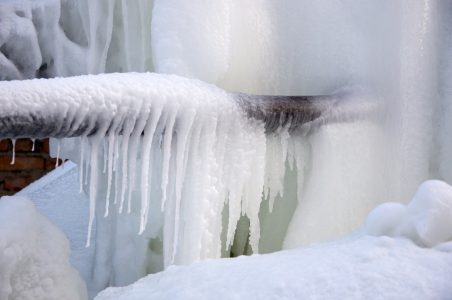Key Approaches for Avoiding Frozen Pipes in Winter
Key Approaches for Avoiding Frozen Pipes in Winter
Blog Article
They are making several good observations on the subject of How To Avoid Freezing Pipes as a whole in this great article beneath.

Winter can damage your pipes, especially by freezing pipelines. Below's exactly how to stop it from occurring and what to do if it does.
Intro
As temperature levels drop, the risk of frozen pipelines rises, potentially leading to costly repair services and water damage. Understanding how to avoid icy pipelines is essential for house owners in chilly environments.
Prevention Tips
Insulating prone pipelines
Cover pipelines in insulation sleeves or use heat tape to protect them from freezing temperatures. Concentrate on pipes in unheated or exterior areas of the home.
Heating techniques
Keep indoor spaces adequately warmed, especially areas with pipes. Open up cupboard doors to permit cozy air to distribute around pipes under sinks.
How to recognize icy pipes
Search for lowered water flow from taps, unusual odors or sounds from pipelines, and visible frost on exposed pipelines.
Long-Term Solutions
Architectural adjustments
Consider rerouting pipelines away from exterior walls or unheated locations. Add added insulation to attic rooms, cellars, and crawl spaces.
Updating insulation
Invest in premium insulation for pipelines, attic rooms, and walls. Appropriate insulation helps preserve constant temperatures and decreases the danger of frozen pipelines.
Shielding Outdoor Pipes
Garden pipes and outdoor faucets
Disconnect and drain pipes garden hose pipes before winter season. Install frost-proof faucets or cover outside taps with insulated caps.
Recognizing Frozen Pipes
What triggers pipelines to freeze?
Pipelines freeze when revealed to temperatures below 32 ° F (0 ° C) for expanded periods. As water inside the pipes ices up, it expands, putting pressure on the pipeline walls and potentially triggering them to break.
Threats and problems
Frozen pipelines can bring about water supply disruptions, residential property damage, and costly repairs. Ruptured pipes can flood homes and trigger extensive architectural damages.
Indicators of Frozen Pipeline
Recognizing icy pipes early can prevent them from rupturing.
What to Do If Your Pipelines Freeze
Immediate activities to take
If you believe frozen pipelines, maintain taps available to relieve stress as the ice thaws. Utilize a hairdryer or towels taken in warm water to thaw pipelines gradually.
Final thought
Protecting against frozen pipes calls for aggressive actions and quick responses. By comprehending the causes, indications, and safety nets, property owners can safeguard their plumbing throughout cold weather.
6 Proven Ways to Prevent Frozen Pipes and Protect Your Home
Disconnect and Drain Garden Hoses
Before winter arrives, start by disconnecting your garden hoses and draining any remaining water. Close the shut-off valves that supply outdoor hose bibs and leave the outdoor faucet open to allow any residual water to drain. For extra protection, consider using faucet covers throughout the colder months. It’s also important to drain water from any sprinkler supply lines following the manufacturer’s directions.
Insulate Exposed Pipes
Insulating your pipes is an effective way to prevent freezing. Pipe insulation is readily available at home improvement stores and is relatively inexpensive. Pay close attention to pipes in unheated areas such as the attic, basement, crawl spaces, or garage. Apply foam insulation generously to create a buffer against the cold. You can also wrap your pipes in heat tape or thermostat-controlled heat cables for added warmth.
Seal Air Leaks
Inspect your home for any cracks or openings that could let in cold air. Seal any holes around the piping in interior or exterior walls, as well as the sill plates where your home rests on its foundation. Additionally, make sure to keep your garage door closed unless you’re entering or exiting. Leaving it open creates a significant air leak that can lead to frozen pipes.
Allow Warm Air Circulation
During cold snaps, it’s essential to allow warm air to circulate evenly throughout your home. Leave interior doors ajar to promote better airflow. Open kitchen and bathroom cabinets to help distribute heat consistently around the rooms. If you have small children or pets, be sure to remove any household chemicals or potentially harmful cleaners from open cabinets for safety.
Let Faucets Drip
A small trickle of water can make a big difference in preventing ice formation inside your pipes. When temperatures drop significantly, start a drip of water from all faucets served by exposed pipes. This continuous flow helps prevent the water from freezing. Additionally, running a few faucets slightly can relieve pressure inside the pipes, reducing the chances of a rupture if the water inside does freeze.
https://choateshvac.com/6-proven-ways-to-prevent-frozen-pipes-and-protect-your-home/

We hope you enjoyed reading our piece on 6 Ways to Prevent Frozen Pipes. Thank you so much for spending some time to browse our content. Sharing is caring. You won't know, you may just be helping someone out. I value your readership.
Click Here Report this page